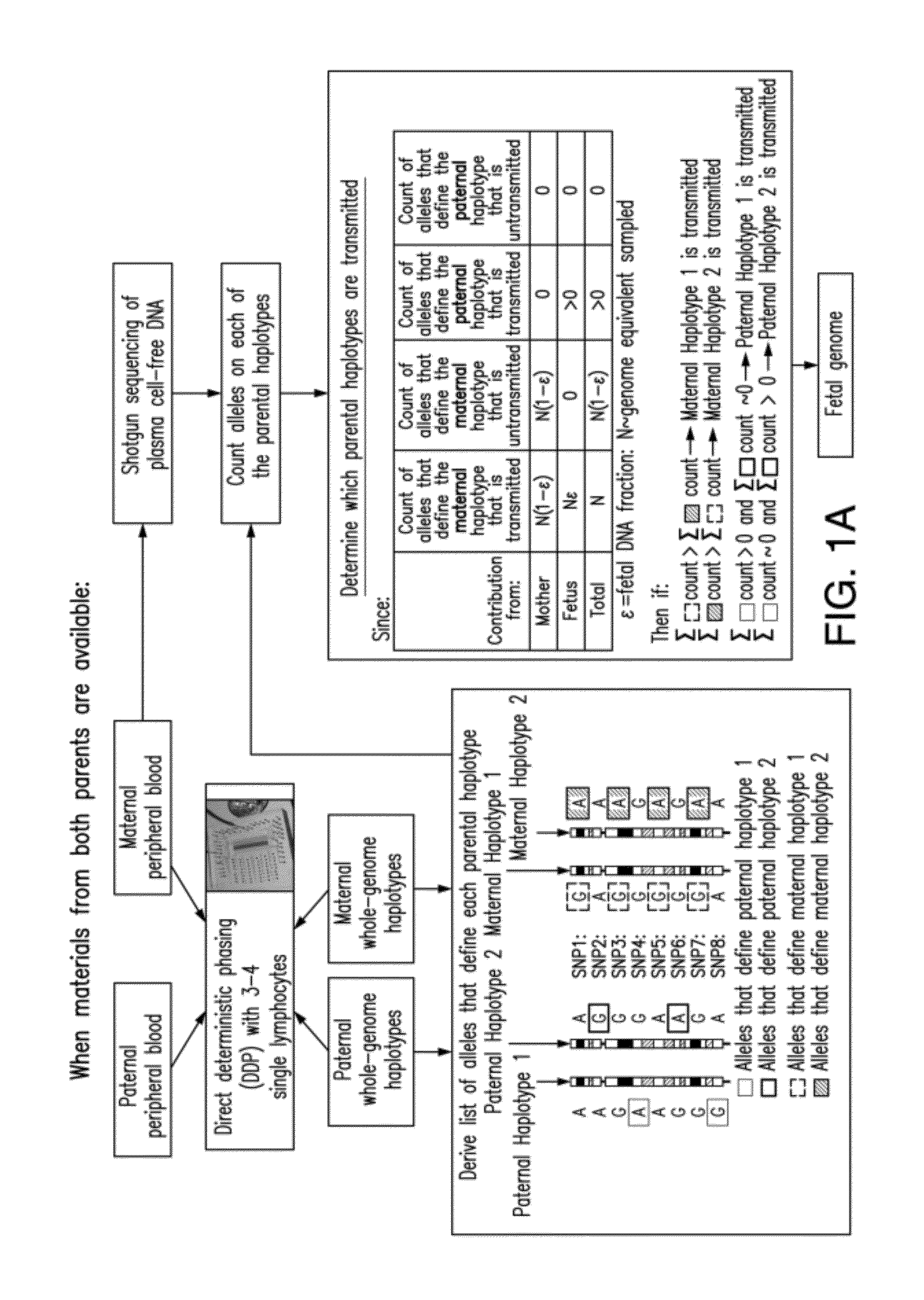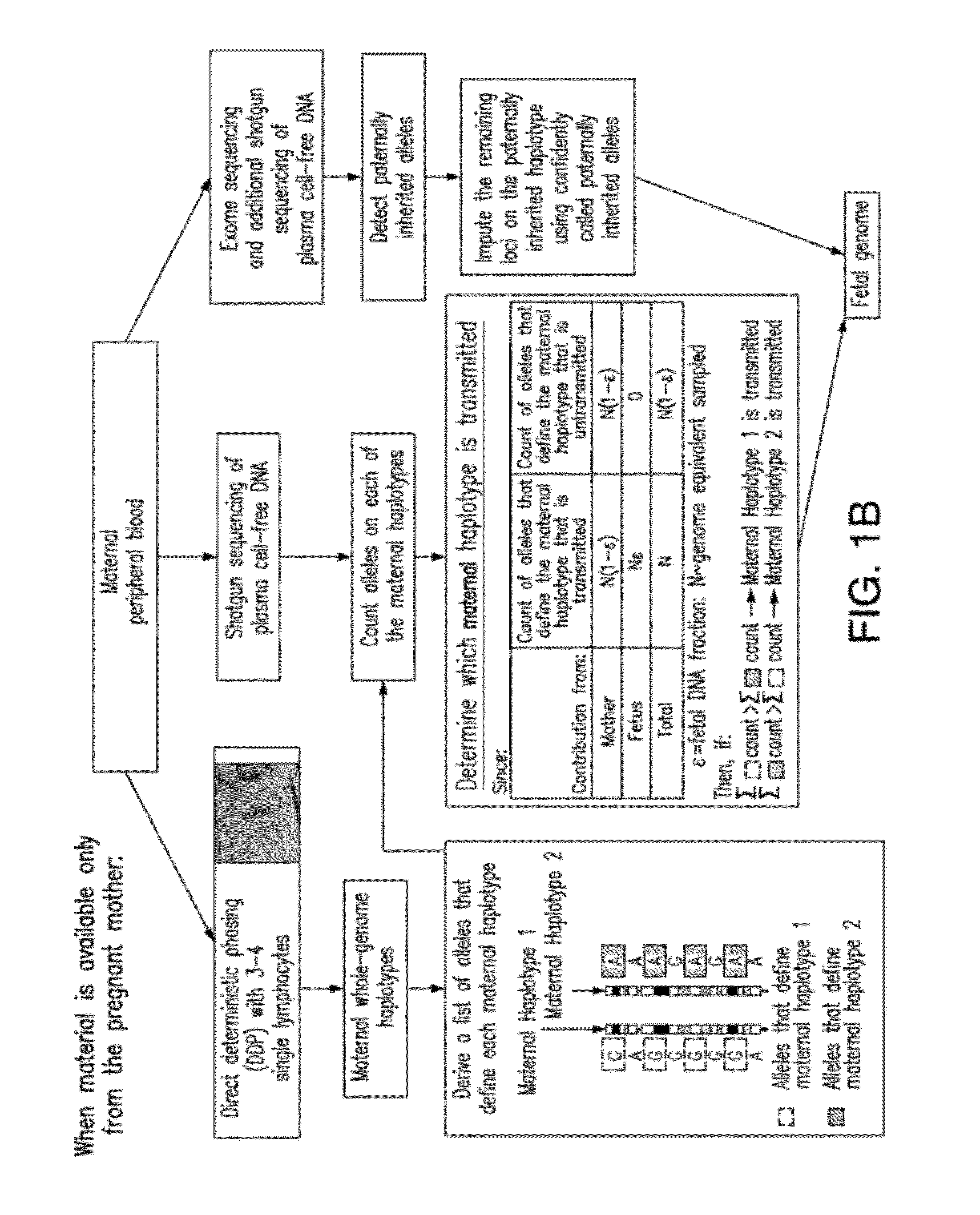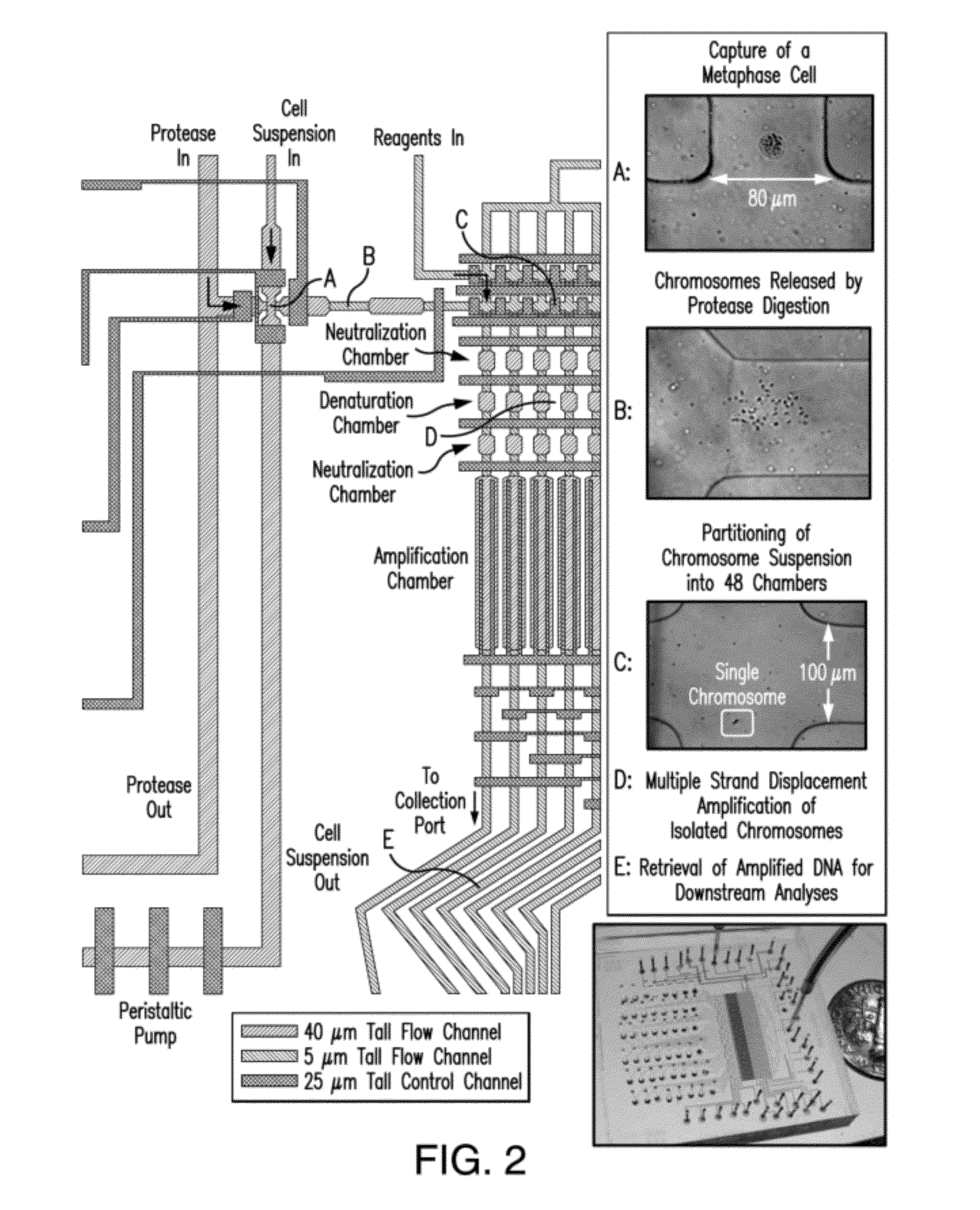Non-invasive determination of fetal inheritance of parental haplotypes at the genome-wide scale
a technology of genome-wide scale and fetal inheritance, which is applied in the field of non-invasive determination of fetal inheritance of parental haplotypes at the genome-wide scale, can solve the problems of inability to easily determine and limit the conventional experimental methods of studying the human genome, and achieve the effect of avoiding possible risks to the fetus during pregnancy
- Summary
- Abstract
- Description
- Claims
- Application Information
AI Technical Summary
Benefits of technology
Problems solved by technology
Method used
Image
Examples
example 1
[0103]To address the shortcomings of the prior art, the inventors have developed an approach termed “Direct Deterministic Phasing” (DDP) in which the intact chromosomes from a single cell are dispersed and amplified on a microfluidic device (FIGS. 2, 3). FIGS. 2 and 3 presents the overview of the microfluidic device for separation and amplification of chromosomes within a single cell. Three masks, one carrying the patterns of the 5 m flow layer, one carrying the patterns of the 40 pm flow layer, and one carrying the patterns of the 25 pm control layer, were printed on transparencies with 40,000 dpi resolution (Fineline Imaging). The two masks carrying flow layers were scaled up by 1.5% to accommodate shrinkage of the thick PDMS layer when it was peeled off from the mold. The flow mold was created with positive photoresist, while the control mold was created with negative photoresist. The protocols in this section were provided by the Stanford Microfluidics Foundry.
[0104]The microflu...
example 2
[0179]The inventors demonstrate here a practical technique that enables the determination of a fetal genome noninvasively from maternal blood. The strategy relies on the knowledge of genome-wide chromosome length haplotypes of the parents obtained using a recently reported microfluidic device, and makes use of high-throughput sequencing as a molecular counting tool to determine which of the parental haplotypes are over-represented in maternal plasma DNA due to the contribution from the fetal genome. Except at regions where recombination of parental chromosomes have occurred, the fetal genome can be unambiguously deciphered from maternal plasma with shallow sequencing when haplotype information of both parents is known, and additional sequencing effort allows the fetal genome to be determined substantially when only maternal information is available. The ability to determine the fetal genome from maternal plasma facilitates the diagnosis of all inherited genetic diseases.
[0180]Introd...
PUM
| Property | Measurement | Unit |
|---|---|---|
| shrinkage | aaaaa | aaaaa |
| temperature | aaaaa | aaaaa |
| temperature | aaaaa | aaaaa |
Abstract
Description
Claims
Application Information
 Login to View More
Login to View More - R&D
- Intellectual Property
- Life Sciences
- Materials
- Tech Scout
- Unparalleled Data Quality
- Higher Quality Content
- 60% Fewer Hallucinations
Browse by: Latest US Patents, China's latest patents, Technical Efficacy Thesaurus, Application Domain, Technology Topic, Popular Technical Reports.
© 2025 PatSnap. All rights reserved.Legal|Privacy policy|Modern Slavery Act Transparency Statement|Sitemap|About US| Contact US: help@patsnap.com



